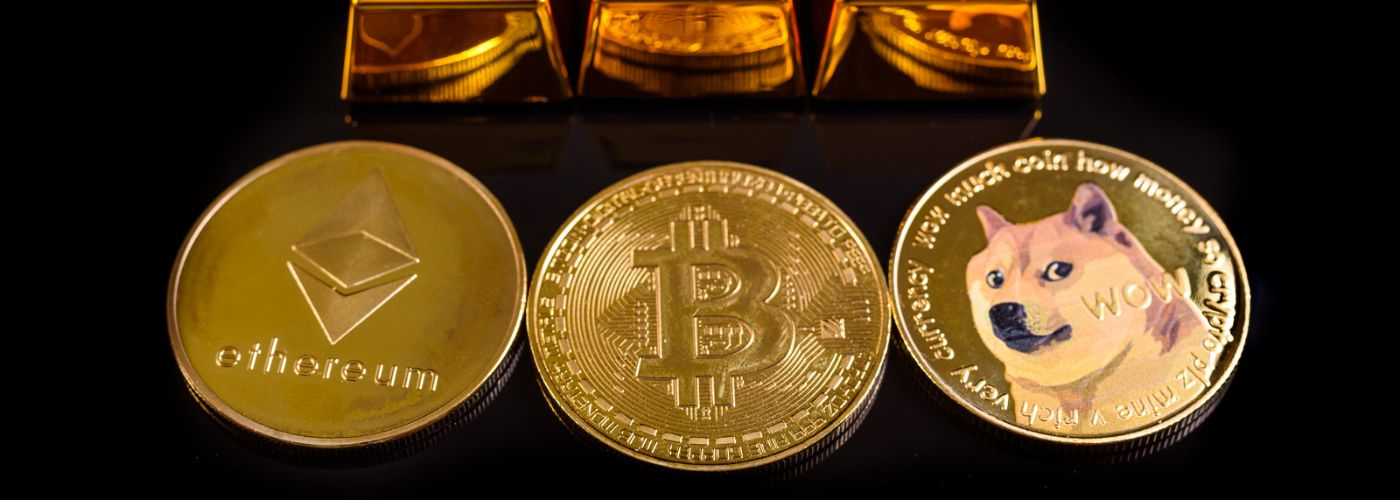Top 10 terms to help a beginner in crypto trading

Description
What to know about cryptocurrency before you start working in this market? Of course, crypto terminology and words will help you navigate the new space of the digital cash systems and avoid risky losses in the concept of “work and earn” on cryptocurrency trading.
Taking your first steps in trading is always exciting, but it can often be risky and reckless without the necessary knowledge. Let's look at the main footholds you will use almost daily to make this easier for anyone ready to go on the crypto trading path. Novice traders learn tons of material (good and not so good, to say the least) from various sources, trying to form a basis for understanding the basics; we tried to simplify this task and collected the top terms and concepts of crypto terminology in one article.
Crypto vocabulary is the basic knowledge of a cryptocurrency investor who wants to work and earn in a legal, qualitative and clear way. Each token and coin is a valuable asset, the use of which is unique in its properties. Investors must navigate basic crypto terms to avoid getting lost in this variety and understand the essence of blockchain network operation.

Altcoin
What to know about cryptocurrency? There is a wide variety of coins in the cryptocurrency market, and Bitcoin is an absolute leader. Throughout its existence (since January 2009), this cryptocurrency has gained the vast majority of the market, admirers and haters, popularity worldwide, etc. Literally, everyone has either talked or written about Bitcoin. Everybody is aware of this cryptocurrency – from housewives and office workers to presidents of leading countries and astronauts. So, Bitcoin is an obvious favorite and honorary headliner of the crypto market.
All other coins on the market are Altcoins. The name comes from 'alternative coins.' All of the coins are alternatives to Bitcoin, as evidenced by the history of the coins' origins and characteristics. For example, Litecoin and Namecoin were the first to be created as alternatives to Bitcoin. Later, Ethereum, Ripple, and others were created. Just like any market, the crypto market cannot have just one product, so it began to grow with new projects. This process continues even now.
Altcoins are not just formal alternatives to the leader, but they can also technically have a number of differences. Some coins have better characteristics than Bitcoin (shorter transaction times, more guarantees of anonymity) but lower capitalization, while others are based on entirely different technologies, such as their own implementation protocol, and can be used not only as a financial asset. For example, one of the world's most popular Altcoins, Ethereum, has become an autonomous system with its own exclusives due to the unique technologies used. The Ethereum system has convenient mechanics of smart contracts (self-executing when conditions provided by the parties are met). It is now used to conduct many trade transactions, with Ethereum acting as the means of payment.
Candlestick
In crypto terminology, a candlestick is an element of a chart of the price movement of a particular cryptocurrency. The element itself is named that way because it resembles a real candle, with both a candlestick body and a visible wick.
This element is a set of trading data for a particular period. Let's say you are looking at a chart where each candlestick shows price changes within one hour. Here, the upper end of the 'wick' is the maximum price value reached during the hour, while the lower end is the minimum. The candlestick body is the price range within which trading volumes fluctuated during that hour. The candlestick also contains information about the initial price (the conditional opening price) and the ending price (the final price) within a specified time frame.
Order book
In the stock exchange interface, there is a prominent object called an order book, consisting of two constantly changing arrays with prices in red and green.
Why 'order book' and what are the 'colored' prices? When they create orders to buy and sell crypto, traders form two groups of orders (bids) at specific prices. These groups are called Ask (sell orders) and Bid (buy orders). Historically, from exchange practice, selling prices are in red, and buy prices are in green.
It makes sense that an array of orders with different sell prices is a supplied array and a buy array is a demanding array. By generating volumes of orders to buy and sell any crypto, traders create its liquidity (the property of assets to be quickly sold at a price close to the market price). So, an order book is a list of orders.
Order
You need a special tool to trade any asset. Any exchange, including cryptocurrency exchanges, provides its clients with such an opportunity via order mechanics. Another crypto lingo term is an order, a trader's request to buy or sell an asset (crypto).
Once in the 'Trade' section, you can buy an asset by clicking on the 'Buy' button or sell by clicking on the 'Sell' button. However, before you click on these buttons, you will have to fill in some fields in the order.
Using sell orders as an example, let's look at some of the features of the main order types. The fill-in fields in orders may differ depending on whether you choose a 'market' or a 'limit' order type. A market order involves filling in the field of the amount at which you wish to buy the cryptocurrency immediately and at the current market price; a limit order consists in filling in the field of the limit price (achievable in the future, different from the market price and more profitable from your perspective) and the field of the desired amount. The same steps are to be followed when placing sell orders.
Remember, by clicking 'Buy' or 'Sell,' you summarise the completion of the order and direct the exchange to execute the trade on the terms you specify.

Crypto terms take-profit and stop-loss
Trading successfully is trading with risk in mind. The biggest risk in trading cryptocurrencies comes from their high volatility (short-term price volatility).
Stop-loss and take-profit crypto terms are unique exchange tools that, when used correctly, allow traders to implement their trading strategies. These tools are orders to the broker to execute a trade according to specified criteria. Based on the names of the tools, it's easy to understand that stop-loss is an order to 'stop losses' and take-profit is an order to 'take profit.'
To better understand the mechanism of stop-losses, let's look at a hypothetical example: Imagine you own an asset of N cryptocurrency for 100 USDT per 1 coin, and you want to make a profit on the growth in its value. When you place a sell order, you know that the market is volatile and the price can go up or down. After analyzing the trend, you decide to place a take-profit order at 130 USDT and a stop-loss order at 90 USDT. So, when the price moves upwards and passes the 130 USDT mark, your order will close with a 30 USDT profit, and when the market drops to 90 USDT, it will close with a 10 USDT loss.
The most common and widely used ratios for traders' probable loss-to-profit range from 1:3 for long-term positions, 1:2 for medium-term, 1:1 for trading in uncertain market conditions (more common for short-term positions when the market spikes around in a predictable range), 2:1 for scalping tactics (short-term positions in day trading).
In our example, we've considered a ratio of 1:3 (10 and 30 USDT, respectively).
Crypto definitions: short and long positions
These terms have gained widespread use in American stock and commodity exchanges. However, their origins can be traced back to medieval Europe, where tags made of hazelwood were used to record debts. People made cuts on them, which marked amounts and quantities of traded goods, and the tags were split lengthwise and handed to parties involved in the transaction. Parts of the tags were always of different lengths: one was short, and another one was long. Hence, the well-established designations for trade transactions. Due to the hazel's unique texture, people believed such tags couldn't be forged.
Thus, short and long are the names for the trading positions and tactics that traders adhere to today.
Short positions: this is the name given to any sell trade, the main purpose of which is to make money on a price drop. In a short tactic, a trader borrows a certain amount of cryptocurrency and sells it at the current market price. Then they wait for the asset's price to drop, buy the necessary amount of cryptocurrency to repay the debt with interest, and keep the difference.
Long positions: here, the profit-making principle is simpler than in short positions. A trader buys an asset and waits for the price to rise to make a profit.

Margin
Another one of the crypto words: margin is a catchy term, it sounds sharp, but it also 'works off' its purpose the same way.
Many exchanges allow their clients to trade with borrowed funds. Naturally, there are almost no philanthropists and altruists in crypto trading, and every financial institution exists due to profits. Therefore, when providing borrowed funds, the exchange needs a guarantor to cover losses if a trader has an unsuccessful trade. This guarantor is the deposit paid by the client to participate in margin trading – a margin. The term 'margin' is closely related to the concept of leverage, which acts as a leveraging tool. For some assets, it may be 2:1, and for others, it can reach 100:1. In these ratios, '1' is the amount of deposit (margin), while leverage is 2 and 100.
So, by making a margin trade to buy a cryptocurrency and having $10, using 100:1 leverage, you can buy the asset for $1,000. Obviously, reselling the cryptocurrency at $1,000 will bring you 100 times more profit than trading at $10. Don't forget about the risks. If the price declines significantly, you can expect a total loss of a deposit because to safeguard your funds in the event of a strong negative movement, the exchange will close your position, and the margin will be used to cover the losses of the lending broker.
Trend
The term is extremely quotable and popular. In crypto trading and any other exchange trading, it's common to identify the characteristics of trends. However, this is not a whim or guesswork but rather a tangible and understandable ability of the market to tend to form trends. When studying the asset price charts, you can always notice and outline wave similarities in its movement. This is how uptrends, downtrends, and sideways trends are defined. It's clear that prices tend to rise, fall, and have moderate price fluctuations within the predicted range in a certain time frame.
Based on trend analysis, for example, followers of the wave theory of price movements identify 3 to 5 waves in a trend and trade within them.
There are two main teams of market players who work in uptrends and downtrends: traders who make money on falling prices are called bears, and those who make money on rising prices are called bulls.

Correction
The next of crypto words is very important for traders. The vast majority of traders eventually start studying the market more deeply, gradually getting to know the facets of technical analysis. At some point, you will start to notice the word 'correction' in the information space.
A correction is the tendency of a price chart to change in the opposite direction of the trend. This is largely self-explanatory and logical. It is generally accepted that a correction reflects the market principle of equilibrium. In simple terms, the market adjusts prices when an asset is oversold or overbought in the market.
Support and resistance levels
When trading following the technical analysis, traders often use benchmarks, a boundary of price ranges. These boundaries are support and resistance levels.
A support level is a level that, when reached by a top-down chart, seems to bounce back and reverse upwards.
A resistance level is a level at which the bottom-up chart is reached, and the price reverses and goes down.
To detect these levels and navigate in which price range to trade, you need to refer to the asset's price chart. Suppose you look at the price movements of an asset over a month and see several price extremes which, after reaching, the chart waves have reversed downwards. By drawing a line through these peaks, you will get a resistance level, as if there is some kind of limit to the price that it's unable to cross and rise. Often, the confirmation of this price limit will be large orders to sell the asset placed in the order book. Crypto traders use this auxiliary level indicator to support their analysis. Similarly, a support level can also be detected by drawing a line through the lows of the chart prices in the desired period. The confirmation of the detected level can also be large buy orders in the order book at the same price or close to it.
If there is a breakout of a level, followed by confirmation of the breakout trend, in most cases, this will signal a further price movement beyond the level. In these situations, new price movement scenarios should be considered. Thus, for example, a breakout of a level of resistance and a price, which continues to consolidate above it, suggests that the previous resistance level is likely to become a new support level, and the market will continue to grow.



